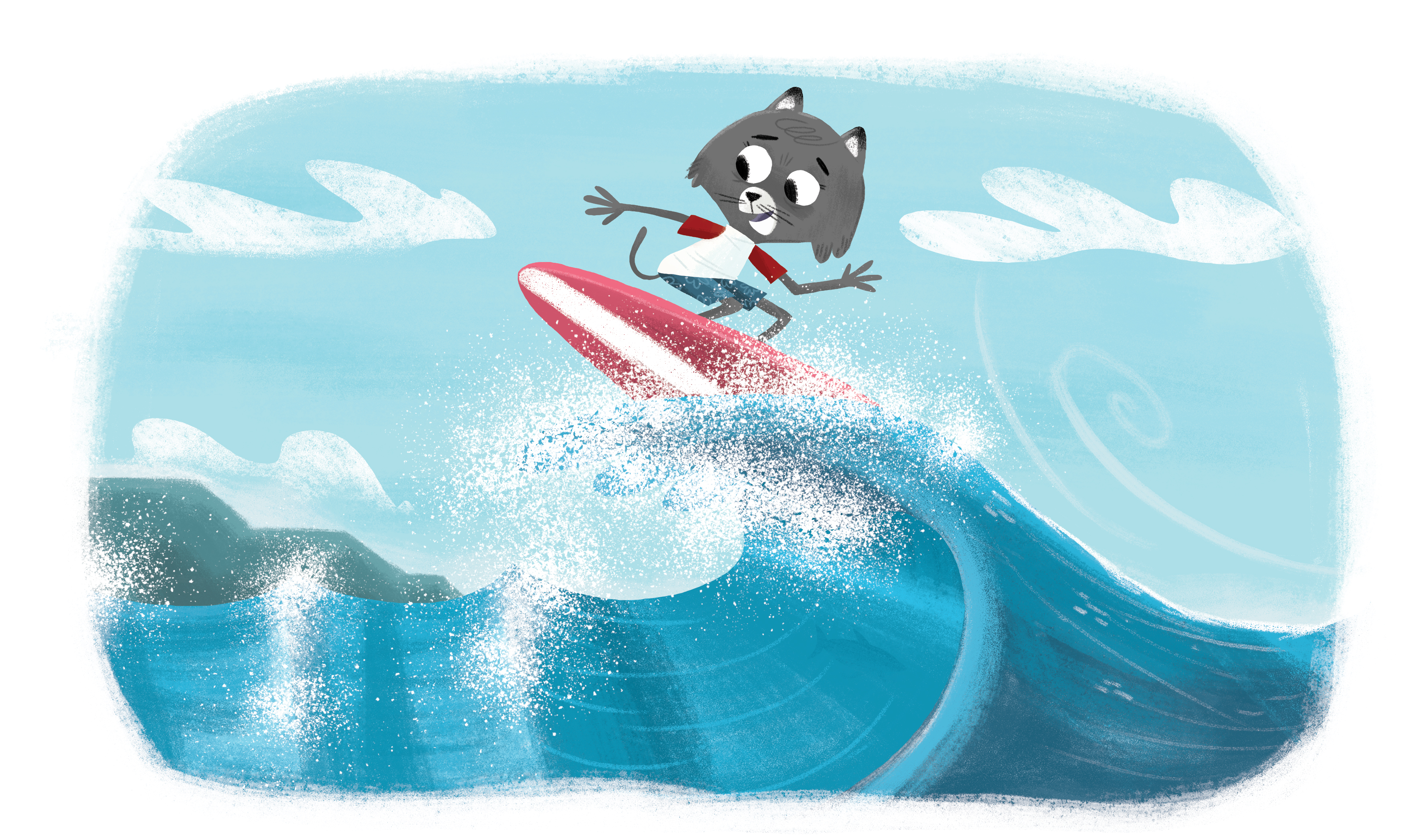Dear Case,
You know, most cats like to stay a comfortable distance from water.
But when I got your science question about our big ocean, I was ready to jump right in.
Ocean water moves in all kinds of ways. Waves curl and crash on the shore. Big conveyer belts of water, currents, flow for thousands of miles around our planet. The tides go out and come back in.
And yes, the wind plays a big part in all of it. That’s what I found out when I went to visit my friend Jeff Vervoort, a geologist and professor of oceanography at Washington State University.
If you stand on the shore, you can often hear and feel the ocean breeze. On windy days, waves start stirring. The smallest waves, called capillaries, start growing as the wind blows across their surfaces.
The stronger the wind blows, the bigger the waves can get. They can reach great heights—some as tall as six-story buildings. When the wave reaches shallower waters, it will start to curl, then break.
If you’re anything like me, you might be wondering where the wind comes from, too. Vervoort explained that our planet is rotating around on its tilted axis. The sun heats the Earth unevenly as it turns. These conditions actually affect the air and wind patterns on the planet surface. All of this moving air pushes the water in the ocean around.
Vervoort pulled down an Earth-shaped beach ball from the shelf in his office. He explained that winds blow in different directions. If Earth wasn’t rotating on a tilted axis, winds would blow very differently.
But, because of the Earth’s spin, wind belts in the northern hemisphere bend to the right. It also makes the winds in the southern hemisphere go to the left. Ocean currents bend in the same way, caused by the Coriolis effect.
The moving water can sometimes also act like a food delivery system. Some currents deliver important sources of nutrients and oxygen down to animals that live in the deep ocean.
Other currents bring up nutrients for animals that live near the surface. These nutrients allow tiny organisms—plankton—to live and grow to great numbers. These very tiny plankton get eaten by bigger animals like krill. Krill are an important food source for even bigger animals such as whales.
Meanwhile, back up on the surface tides go in and out. While wind impacts the tides a little bit, they mostly happen because gravity from the moon, and a little less from the sun’s gravity, pull water on Earth.
For the most part when it comes to water moving in the ocean, your hypothesis is correct, Case. It’s wind that mostly keeps our ocean surface in motion.
Sincerely,
Dr. Universe
Find this article printed in Washington State Magazine!
